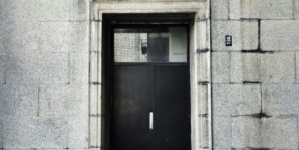-
BLACKOUT TECHNOLOGIES TARGETS TELEMATICS-INTEGRATED MOBILE DEVICE BLOCKING TO COMBAT SMARTPHONE DISTRACTION - April 1, 2025
-
OpenADR Alliance announces first OpenADR 3.0 certified products with EVoke Systems, E.ON Energy and Universal Devices - March 25, 2025
-
Growing fulfilment and contract packer appoints new Managing Director - March 25, 2025
-
When is it time to invest in a WMS? Understanding the key trigger points - March 25, 2025
-
eCapital helps Vantage Recruitment on its journey to financial success - March 24, 2025
-
Hugo Beck Celebrates 70 Years of Packaging Innovation with Open House Events - March 20, 2025
-
PROLOG FULFILMENT SUPPORTS LUNA DAILY’S COMMITMENT TO BETTER BODY CARE FOR ALL WOMEN - March 19, 2025
-
Motion Ventures launches largest-ever maritime tech fund at $100M to meet the industry’s new pace of adoption - March 18, 2025
-
ITD GLOBAL APPOINTS GROUP CHIEF REVENUE OFFICER - March 17, 2025
-
SURECAM TEAMS UP WITH ENTERPRISE FLEX-E-RENT FOR VEHICLE REPAIR & MAINTENANCE CONFERENCE - March 14, 2025
The $100 Billion Returns Question
By Karin Bursa, Executive Vice President, Logility
Now that the holiday season is behind us, retailers can sleep easy, right? Well, no. Seasons are now both shorter and more frequent which means you quickly move on to the next one. However, a large and rapidly growing issue has emerged: the cost of returns. Unwanted gifts, incorrect sizes, styles and fits that didn’t match expectations, the reasons are countless. To attract and retain customers, many retailers strive to make the return process as frictionless as possible. But at what cost? The ease of returning an online purchase has turned the bedroom into the retail fitting room. Consumers now purchase multiple variations of the same product to “try on” at home and then return the rest.
Following the 2017 holiday season, several industry pundits proclaimed retailers would lose about $90 billion (yes… billion!) in returned merchandise that could not be resold (Good news for FedEx and UPS: People just opened $90 billion in unwanted gifts). Recently, another report published claiming this number reached $107 billion for 2017 ($107 Billion Lost In Returns). Regardless of the final number, we are talking about a lot of money that simply should not be “thrown away to erode margins.”
Returns can be forecasted and much of that inventory can be placed back onto store shelves or made available through ecommerce, discount locations, etc. So, if retailers know the returns are going to happen, why are the losses so high? I sat down with retail industry veteran Jim Brown to learn more.
Karin: Are you surprised at the high cost of returns?
Jim: Not at all. When I was in the shoe industry, we experienced a higher-than-average rate of returns that could not be sold. Today, the consumer’s mindset has evolved and applied the same logic we saw in the shoe industry, try on a wide variety before you find the right one, to the rest of their purchasing habits. Consumers today are more comfortable ordering more and returning most of that order. It is too easy to add items to an online shopping basket knowing you have the option to return the merchandise with free shipping. And, since you used a credit card, you’ll never have to pay out-of-pocket.
Karin: Based on your experience, what happens to this merchandise?
Jim: Basic items typically do not make up the bulk of the retuned merchandise. So, if the items are re-saleable, a lot of them will move into a markdown status by the time they make their way back to the store, or into the available warehouse inventory due to selling seasons. Unfortunately, it’s not as simple as taking it from the initial customer and placing it back on the shelf. Often, there are many hands that will interact with the merchandise—tags may have been removed, packaging may be defective, etc. All of this takes time, resources and investment to re-create and ready the merchandise for resale. Time is money and each ‘touch’ depletes your margin.
Karin: Why are retailers not able to place the merchandise back in circulation?
Jim: Most retailers will try, or have a process that should accommodate getting the product back into the inventory. The reality is most retail supply chains are optimized to bulk move allocated or replenished goods to the stores / locations. Handling one item at a time is a very labor-intensive activity. Determining if the item is damaged, repairable, tagged, packaged appropriately, etc. all adds to this cost. If you consider the margin on a single item, the least costly option may be to not handle it all. Of course, this is dependent upon the cost and margin of the item, so you need policies in place that accommodate all types of merchandise sold. This is the same reason why reducing store-to-store transfers is so important for retailers.
Karin: Are certain industries more prone to this issue?
Jim: Definitely. Health and beauty is a good example because this industry is heavily regulated. Once a safety seal is broken, that item is off the market for resale. Ready-to-wear is another good example due to its specific sizing which is also prone to returns. Technology becomes obsolete quickly, and the packaging is almost impossible to return to its’ ‘factory fresh’ condition. This forces the majority of these returns to be sold at a markdown, contribute to that staggering number you mentioned earlier and result in ‘open box’ promotions and discounts.
Karin: What are some of the ways retailers mitigate this issue?
Jim: This has become increasingly more difficult. In the past, retailers could require return authorizations or a short return window. However, in today’s competitive environment where shoppers have more options, retailers are hesitant to put up any customer service barriers. The prevalence of social media means one bad experience can be amplified across a broad audience and impact future sales. If I know the return process will be a hassle, chances are I will shop elsewhere. The best way to mitigate returns is to get the transaction right with the customer at the point of purchase. By providing as much information about the item to them as possible, easy access to customer reviews, etc. will lessen the chance that an item will come back up front. Some retailers are experimenting with virtual dressing rooms and other innovative technology to help minimize the volume of returns.
The cost of returns is truly an astonishing figure; however, as Jim outlines retailers are just not set up to handle the one-off item returns in a cost effective manner. There are ways to minimize the burden including getting the sale right from the start. Additionally, retailers need to forecast the returns as a part of their planning process and develop more cost effective measures for handling the merchandise as it comes back. If you are able to better predict the amount of returned merchandise you are likely better equipped to collaborate with your suppliers and partners to mitigate the cost to you while still delighting your customers.

































